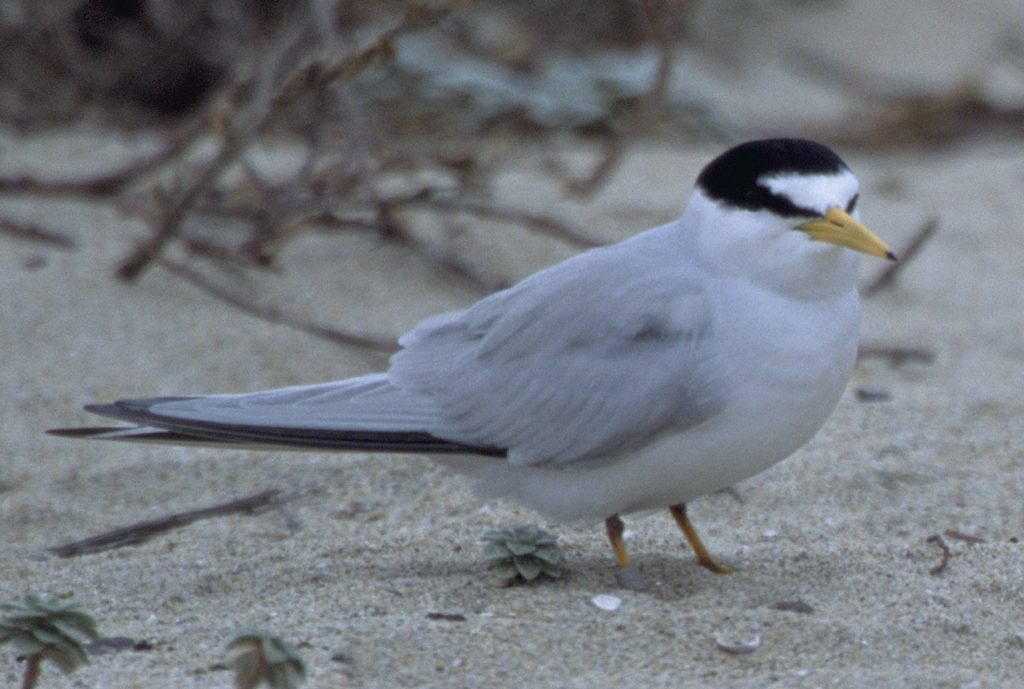
STATUS
Federal status: Endangered
State status: Endangered
POPULATION TREND
(+) Increasing
RESTORATION
Intermediate
FAMILY
Laridae, a family of adaptable seabirds
RANGE
This migratory bird spends April to September in California (from the Bay Area to San Diego) and winter in Mexico and Costa Rica
Appearance
The California least tern is the smallest (10 cm long) of the North American terns, hence the name “least” tern. It has a sleek white body, grey back, black cap, and distinct yellow legs and beak with a black tip on the end.
Habitat
Foraging takes places near shore, where the birds hover and dive for bait fish (e.g. anchovies, top smelt). They can also be seen resting on open sand or gravel along the coast and rivers. Colonies, typically consisting of approximately 25 pairs, nest together on relatively open sandy beaches free of vegetation. California least terns also uses human-made surfaces such as gravel roofs and dredge spoils.
Threats
Heavy recreational use of beaches in Los Angeles and California in general have reduced the area available to nesting colonies. The birds also face high rates of predation due to raccoons, crows, and feral cats.
Conservation
Federal and State agencies have identified important coastal nesting areas for the California least tern. California least terns occur in two fenced-off nesting sites in Los Angeles County (Marina Del Rey, Long Beach).
Where can you spot it?
In Los Angeles, California least terns may be seen on the beach at Malibu lagoon from April to September.
References:
- California least tern (Sternula antillarum browni) 5-Year Review Summary and Evaluation. 2006. u.S. Fish and Wildlife Service,Carlsbad Fish and Wildlife Office, Carlsbad, California. [link]